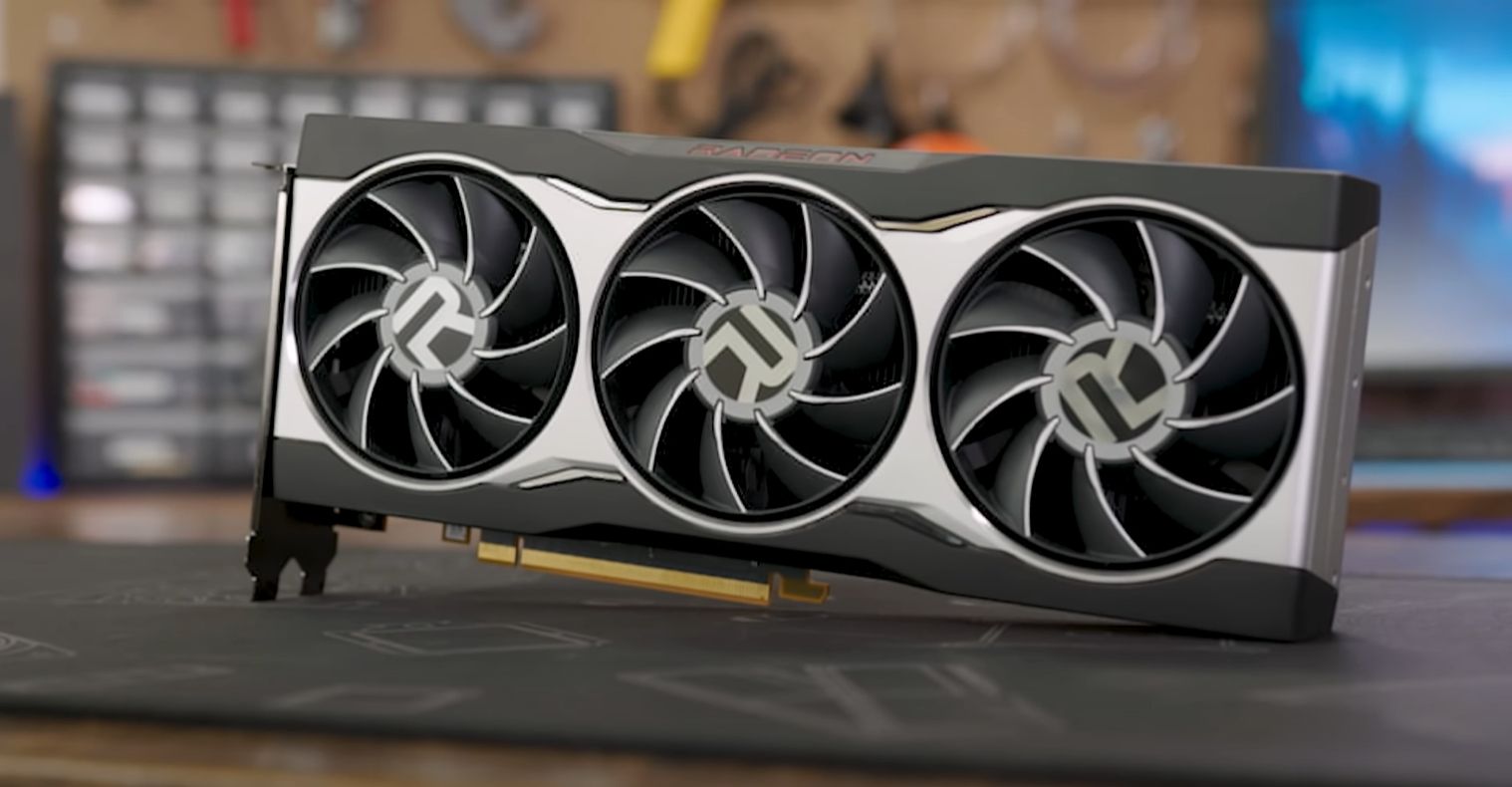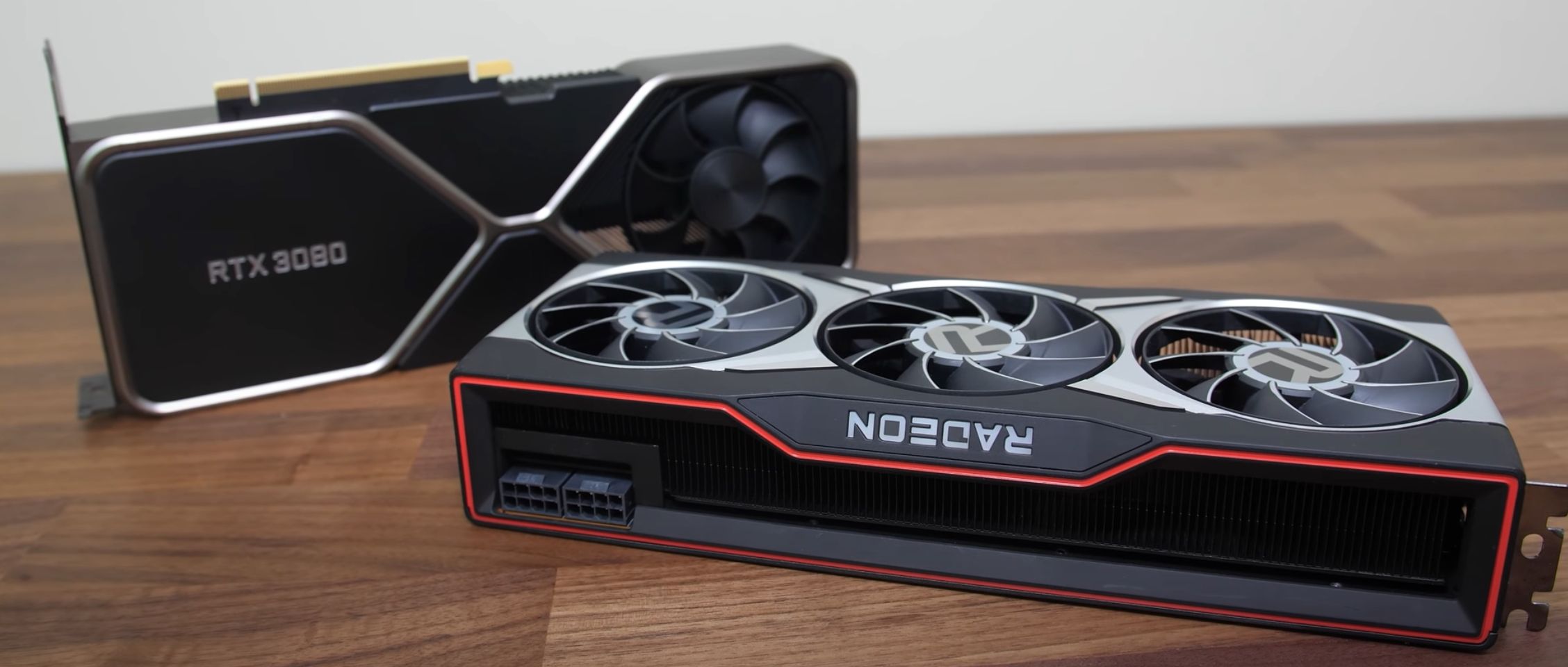If you're on the lookout for a new, high-end GPU for your gaming PC, the two best options available are the NVIDIA RTX 3080 and the AMD Radeon RX 6800 XT. Both GPUs compete neck to neck, but one trumps the other in some scenarios and vice versa. To help you decide which new GPU to buy, this article will compare both GPUs across various categories, ranging from gaming performance to actual availability.
NVIDIA RTX 3080 vs. AMD Radeon 6800 XT: Gaming

When you're talking about two top-end GPUs, gaming performance is the first consideration. Both cards are quite capable of running the latest games at very high frame rates on ultra settings. However, the differences between the RTX 3080 and the Radeon 6800 XT become clearer as you increase the resolution at which you want to game.
For 1080p gaming, both cards have more than enough power to run any title at 100+ frames per second (FPS). Although this can vary based on factors such as how well optimized the game is. For example, Assassin's Creed Valhalla was heavily promoted by AMD, and it does perform substantially better on the Radeon 6800 XT, delivering 138 FPS vs. 98 FPS on the RTX 3080. On average, the AMD card is marginally better than the NVIDIA RTX 3080 when it comes to raw FPS. Although, that difference is barely visible in real-life scenarios.
Even if you crank the resolution up to 1440p, the difference is so negligible that it's essentially a tie between the two cards. However, performance at 4K is a completely different story, mainly because AMD doesn't have an answer for NVIDIA's Deep Learning Super Sampling 2.0 (DLSS 2.0) technology.
When using native 4K rendering on games like Watch Dogs: Legion, both cards could barely cross the 40 FPS mark. However, once DLSS was switched on, the performance shot up exponentially. The NVIDIA card averaged about 70 FPS with no noticeable change in quality, thanks to NVIDIA DLSS 2.0.
AMD has launched a competitor to DLSS in the form of AMD FidelityFX, but it is still leagues behind NVIDIA's DLSS 2.0 tech. The performance further skews in favor of NVIDIA when DirectX Ray Tracing (DXR) is switched on.
NVIDIA RTX 3080 vs. AMD Radeon 6800 XT: Specifications and Features

Speaking of raw specifications, there are hardware differences between the two GPUs. The most noticeable distinction is the AMD Radeon 6800 XT's 16GB memory capacity compared to the NVIDIA RTX 3080's 10GB. While this may seem like a huge difference, there really aren't any games that can use 10GB of memory, let alone 16GB. However, this does make AMD's offering slightly future-proof.
Things are different when talking about memory speeds. NVIDIA's GPU has a memory speed of 19GB/s, whereas the Radeon GPU trails behind, with a speed of 16GB/s. This translates into slightly better performance, allowing the RTX 3080 to process large assets faster. NVIDIA's card also leads in the architecture and memory bandwidth department. It is a 320-bit card with a memory bandwidth of 760 GB/s compared to the Radeon, a 256-bit GPU with a 512 GB/s memory bandwidth. While this doesn't necessarily make a difference when playing older or low-res games, this variance becomes apparent when playing demanding games.
While both NVIDIA and AMD offer ray tracing in their cards, the RTX 3080 has much better performance with ray tracing on. The primary reason for this is that NVIDIA introduced this feature in their RTX 2000 series as well. The Radeon 6000 series mark AMD's first attempt to implement ray tracing.
If you're a competitive gamer, NVIDIA offers a feature called Reflex that appreciably lowers the input latency in supported titles such as Apex Legends and Call of Duty: Black Ops Cold War. The closest feature that AMD offers to this is Anti-Lag. However, AMD's feature is nowhere as close to NVIDIA Reflex when it comes to implementation and functionality. All around, NVIDIA has a better suite of features for gamers.
NVIDIA RTX 3080 vs. AMD Radeon 6800 XT: Price and Value

Due to scalpers and supply shortage, none of the GPUs are easy to find and certainly not at the MSRP. The NVIDIA RTX 3080 and AMD Radeon 6800 XT have a suggested price of $699 and $649, respectively. Clearly, AMD's GPU is cheaper. However, a $50 price difference isn't huge when speaking of flagship GPUs.
As is evident, both GPUs stand shoulder to shoulder in most categories, with NVIDIA leading in the features and software department. Ideally, this makes the $50 premium worth it. Additionally, most users wouldn't prefer switching manufacturers, and the extra $50 isn't going to deter them from the purchase.
Realistically speaking, finding these cards for less than $1500 on any website is nigh impossible. Thus, both cards are certainly going to be overpriced for the value they offer, at least for now. The RTX card maybe even more expensive because it is 50% better at Ethereum mining, making it valuable for cryptocurrency miners.
Should You Upgrade Your Gaming PC?
In a nutshell: if you plan to play games at 1080p and already own an RTX 2000 or Radeon 5000 series GPU, it doesn't make sense to upgrade your PC. The previous generation cards are more than capable of handling any game you throw at them with ease. However, if you plan on gaming at 2K or 4K, investing in a new GPUs might be a better bet, but once the prices are lowered again.
Most likely, if you're running an older system, you might have to upgrade other components such as the CPU and motherboard to match the GPU. Otherwise, you risk bottlenecking the GPU with lower-spec components. Of course, this is only valid if you're running the equivalent of an 8th generation Intel Core i3 processor.
Additionally, purchasing GPUs at exorbitant rates is only going to encourage scalpers further. All in all, it's better to delay your purchase until 2022, when prices are expected to come down to reasonable levels.